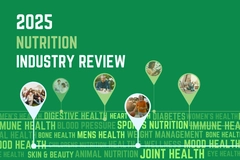
- Industry news
Industry news
- Category news
- Reports
- Key trends
- Multimedia
Multimedia
- Journal
- Events
- Suppliers
Suppliers
- Home
- Industry news
Industry news
- Category news
- Reports
- Key trends
- Multimedia
Multimedia
- Events
- Suppliers
Suppliers
Cultural norms & linguistic diversity impact Europeans’ on-pack health claims understanding, finds EU-wide study
09 Nov 2021 --- Cultural and linguistic differences across EU Member States make it difficult to harmonize on-pack health claims communication in the F&B arena. This is according to the latest update from Health Claims Unpacked, an EU-wide, EIT Food-funded research project founded in 2019.
NutritionInsight catches up with contributing researcher Dr. Chris Ryder as his team continues to investigate the “healthy” versus “normal” debate and how language affects EU enforcement policies.
Ryder is a postdoctoral research associate at the Department of English Language and Applied Linguistics at the University of Reading, UK.
Health claim reluctance
Many manufacturers are reluctant to use health claims on-pack to avoid overly complicated references and the differences in how regulation is enforced in different countries. These labeling choices result in consumers receiving less information about the nutritional value of their food.
“Health claims need to be presented in a way that manufacturers will want to use them, and for this to happen they need in turn to be presented in a way that consumers will want to read them and will understand them,” Ryder explains.
Consumers not understanding the nutritional value of their food can undermine their health in the long-term.“There also needs to be more work done generally to educate consumers that these health claims are scientifically-backed and regulated, so they are not just perceived as ‘marketing tricks.’”
Principal project investigator Professor Rodney Jones also tells NutritionInsight: “Hopefully this project will start a dialogue between regulators and manufacturers about how a regulation that is supposed to cover the entire EU can be made more sensitive to the needs of consumers in different jurisdictions.”
Cultural considerations
According to Health Claims Unpacked’s research, cultural ideas about food and eating affect how consumers respond to health claims.
In France, for example, the concept of food is largely focused around the pleasure in eating, and so French consumers are less interested in nutrition at this level.
“Rather, they will just try to have a balanced diet overall,” says Ryder. “On the other hand, a Polish manufacturer told us that, in Poland, the pleasure from food is a lot more about the cooking than the eating, so food can be a lot more functional in this sense.”
For this reason, Polish consumers are more interested in health claims than French consumers, who are more skeptical of them, notes Ryder.
“In Germany, there is a similar lack of interest and skepticism toward health claims to the French,” he adds. “But this is more because of interest in the environmental impact and sustainability.”
Defining what’s “normal”
Translating health claims into different languages can also result in an uneven playing field among European food companies.
Dr. Sylvia Jaworska, a linguist working on the project, points out translation is “never a matter of one-to-one correspondence.”The researchers found French consumers are most focused on eating food, Polish on cooking and German on food’s environmental impact, influencing how they respond to health claims.
For example, the word “normal” appears in the English version of around two-thirds of authorized health claims, such as: “Potassium contributes to the maintenance of normal blood pressure.”
However, in many of the official Polish translations of health claims, the word “healthy” (zdrowy) is used instead of “normal,” for example: “Wapń jest potrzebny do utrzymania zdrowych kości,” or “Calcium is needed to maintain healthy bones.”
“The way the word ‘normal’ is used in the English scientific language is different from the way it is understood by Polish speakers, for whom it might even have a negative connotation.”
Ryder highlights how similar findings have also been noted from the project’s Hungarian data. “Our Hungarian linguist has said a lot of the official translations in Hungary have been labeled with old-fashioned language.”
He suspects this is because usually these more experienced and older translators have moved away from Hungary for their work and have not kept up with some of the more modern local linguistic trends.
Outdated language and sentence structure
According to Ryder, current health claims phrasing is predominately based on the left-to-right and uninflected nature of English.
“In the German, Polish and Hungarian versions, we have had to consider that decisions made later in a sentence have an effect on the inflections made earlier in the sentence.”
“While this has not been too much of a challenge for our developers, it does bring to light the very nature of how sentences are formed in the mind and how certain features of a language can change how users approach reading and writing.”
The Health Claims Unpacked project is also investigating how color and design impact European consumers’ understanding of health claims.Consumers in different countries also responded differently when authorized health claims were reworded.
English and German speakers preferred shorter claims with simple words and grammar and no figurative language, such as metaphors.
For example: “Selenium contributes to antioxidant activity,” versus “Selenium contributes to the protection of cells from oxidative stress.”
French consumers, however, did not think figurative language interfered with the scientific meaning of claims.
Design matters
In our last interview, Ryder told NutritionInsight about how the use of certain colors, using verbs over nouns and demographic-specific vocabulary can make on-pack health claims more convincing for consumers.
PackagingInsights also explored the most prominent packaging design trends in a recent Special Report.
By Anni Schleicher












